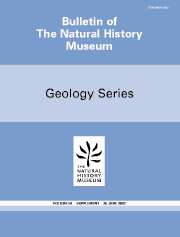Article contents
Cannibalism in Britain: Taphonomy of the Creswellian (Pleistocene) faunal and human remains from Gough's Cave (Somerset, England)
Published online by Cambridge University Press: 26 May 2004
Abstract
Human induced damage is the main taphonomic modification observed on the fossil bone assemblage of Gough's cave. Fossils from this site are very fragmentary, showing abundant cut-marks, percussion marks and peeling. Some specimens, however, are complete (ribs, vertebrae, carpal-tarsal bones and phalanges), but these elements are characterised by low marrow content where breakage to open the bone is not needed. Human remains recovered from this site show similar butchering patterns to other animals suggesting skinning, dismembering, defleshing and marrow extraction activities. Excavations during the 1986–1987 seasons showed that the human remains appear at the site randomly mixed with animal bones, with no specific distribution or arrangement of human bones. The evidence from this distribution indicates equal treatment of human and animal remains, and the analysis of cut-marks and other modifications suggests that both humans and animals were accumulated as the discarded food remains of the human population. This is interpreted as nutritional cannibalism. One exception to this is seen in the slight differences in skull treatment compared with other sites, suggesting a possible element of ritual cannibalism (cf Fontbrégoua, the French Neolithic site, ca 4000 BC).
- Type
- Research Article
- Information
- Bulletin of the Natural History Museum: Geology Series , Volume 58 , Issue S1 , 26 June 2003 , pp. 59 - 81
- Copyright
- © Natural History Museum, 2003
- 8
- Cited by


